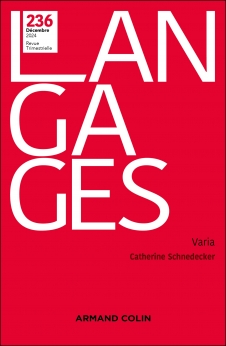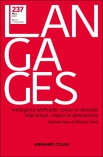
LANGAGES N° 236 (4/2024)
Pour acheter ce numéro, contactez-nous
Recevez les numéros de l'année en cours et accédez à l'intégralité des articles en ligne.
L’aspect a suscité de l’intérêt en linguistique en raison de sa complexité dans l’acquisition d’une langue seconde. Cette étude examine comment des étudiants arabophones jordaniens (L1) apprenant le français (L2) acquièrent l’aspect accompli et interprètent la valeur aspectuelle d’un verbe passé associé à l’expression temporelle il y a. Cette construction permet une lecture de sous-ensemble en français, contrairement à l’arabe jordanien, qui admet à la fois des lectures de sous-ensemble et de sur-ensemble. Le Principe des sous-ensembles prédit que les apprenants jordaniens suivront la lecture de sous-ensemble, tandis que la théorie du Transfert suggère que la lecture de sur-ensemble pourrait aussi être appliquée. Les résultats montrent que la majorité des 20 étudiants se conforment au Principe des sous-ensembles, bien qu’une minorité montre un comportement aligné avec la théorie du Transfert.
Aspect has been a central focus in linguistics due to its complexity in second language acquisition. This study explores how Jordanian Arabic speakers (L1) learning French (L2) acquire aspect, specifically how they interpret perfective verbs combined with the time expression IL Y A in French. The construction allows a subset reading in French, unlike Jordanian Arabic, which allows both subset and superset readings. The Subset Principle predicts that learners will follow the subset reading in French, while the Transfer Theory suggests they might also apply the superset reading from their L1. Results from a group of 20 Jordanian learners of French show that most follow the Subset Principle, while a minority exhibit behavior consistent with the Transfer Theory. These findings demonstrate the influence of L1 on L2 acquisition and contribute to understanding the general problem of L2 language acquisition.

